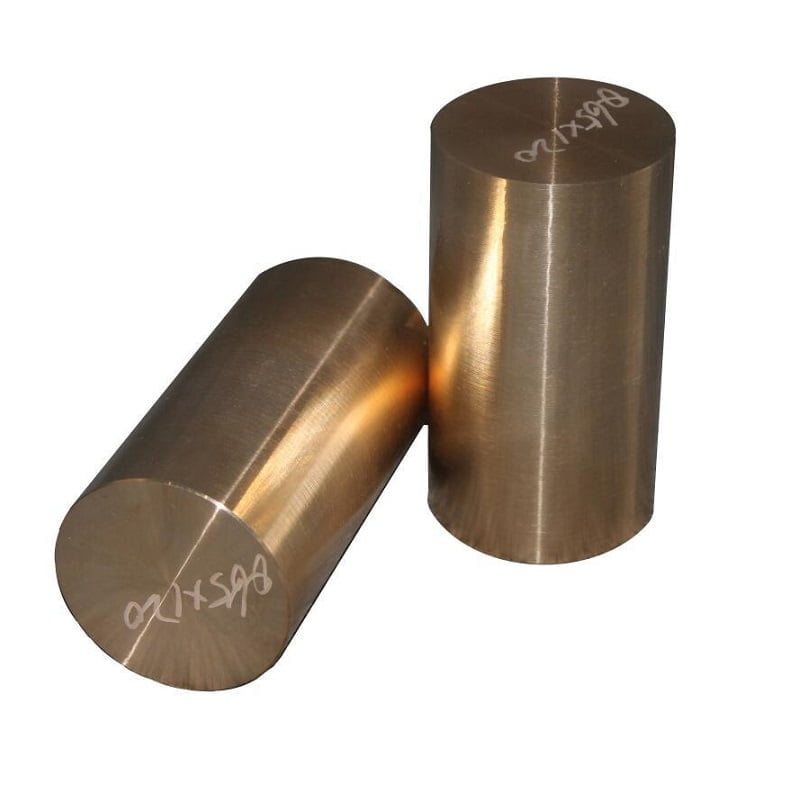
Introducción
C17510 y C17200 son ambos aleaciones de cobre de berilio, known for their excellent combination of high strength, conductivity, and corrosion resistance. These alloys are widely used in various industries, including aerospace, automotive, electronics, and oil & gas. While they share some similarities, they also have distinct characteristics that make them suitable for different applications.
Composición química
La composición química de estas aleaciones juega un papel crucial en la determinación de sus propiedades y rendimiento.
| Elemento | C17510 (WT%) | C17200 (WT%) |
|---|---|---|
| Cobre | 98.1 - 99.5 | 96.5 - 98.1 |
| Berilio | 0.2 - 0.6 | 1.8 – 2.0 |
| Cobalto + níquel | 0.2 - 1.4 | 0.2 - 0.6 |
| Planchar | 0.1 - 0.4 | Máx 0.2 |
| Aluminio | - | Máx 0.2 |
| Silicio | - | Máx 0.2 |
| Otros | Máx 0.5 | Máx 0.5 |
La principal diferencia en la composición es el contenido de berilio, que es significativamente mayor en C17200. Esta diferencia afecta a varias propiedades de las aleaciones.
Propiedades mecánicas
Las propiedades mecánicas son cruciales para determinar la idoneidad de estas aleaciones para aplicaciones específicas.
| Propiedad | C17510 | C17200 |
|---|---|---|
| Resistencia a la tracción (MPa) | 655 - 795 | 1140 - 1310 |
| Límite elástico (MPa) | 520 - 725 | 965 - 1140 |
| Elongación (%) | 10 - 20 | 3 - 10 |
| Dureza (HRB) | 90 - 100 | 97 - 105 |
| Módulo elástico (GPA) | 131 | 131 |
C17200 generalmente exhibe una mayor resistencia y dureza, mientras que C17510 ofrece una mejor ductilidad (alargamiento).
Propiedades físicas
Las propiedades físicas son importantes para aplicaciones que involucran conductividad térmica y eléctrica.
| Propiedad | C17510 | C17200 |
|---|---|---|
| Densidad (g/cm³) | 8.83 | 8.25 |
| Conductividad eléctrica (%IAC) | 45 - 65 | 22 - 28 |
| Conductividad Térmica (W/m·K) | 208 - 300 | 105 - 130 |
| Coeficiente de expansión térmica (µm/m · ° C) | 17.8 | 17.0 |
| Rango de fusión (° C) | 870 - 980 | 870 - 980 |
C17510 demuestra una conductividad eléctrica y térmica superior en comparación con C17200.
Tratamiento térmico
Ambas aleaciones se pueden fortalecer a través del tratamiento térmico, pero los procesos y los resultados difieren:
| Aspecto | C17510 | C17200 |
|---|---|---|
| Tratamiento de solución | 900 - 925 ° C | 760 - 780 ° C |
| Temperatura de envejecimiento | 460 - 480 ° C | 315 - 345 ° C |
| Tiempo de envejecimiento | 2 - 3 horas | 2 - 3 horas |
| Aumento de la fuerza | Moderado | Significativo |
C17200 generalmente logra un aumento más significativo en la resistencia a través del tratamiento térmico debido a su mayor contenido de berilio.
Resistencia a la corrosión
Ambas aleaciones exhiben una excelente resistencia a la corrosión, pero hay algunas diferencias:
| Ambiente | C17510 | C17200 |
|---|---|---|
| Atmosférico | Excelente | Excelente |
| Agua de mar | Muy bien | Muy bien |
| Ácidos | Bien | Bien |
| Alcalino | Bien | Bien |
| Resistencia a la corrosión por estrés | Excelente | Muy bien |
C17510 puede tener un ligero borde en la resistencia a la corrosión de estrés debido a su menor contenido de berilio.
Características de fabricación
Las propiedades de fabricación de estas aleaciones son importantes para los procesos de fabricación:
| Característica | C17510 | C17200 |
|---|---|---|
| Maquinabilidad | Bien | Bien |
| Conformabilidad | Muy bien | Bien |
| Soldabilidad | Bien | Justo |
| Trabajo en caliente | Bien | Bien |
| Trabajo en frío | Excelente | Muy bien |
C17510 generalmente ofrece una mejor formabilidad y soldabilidad debido a su menor contenido de berilio y una mayor ductilidad.
Aplicaciones
Las propiedades únicas de cada aleación las hacen adecuadas para diferentes aplicaciones:
Aplicaciones C17510:
- Conectores electricos
- Resortes de alto rendimiento
- Electrodos de soldadura de resistencia
- Disipadores de calor
- Marcos de plomo de circuito integrado
- Rodamientos y bujes
- Herramientas no parecidas
Aplicaciones C17200:
- Resortes de alta resistencia
- Diafragmas
- Fuelle
- Instrumentos de precisión
- Moldes para inyección de plástico
- Rodamientos en entornos corrosivos
- Instrumentos quirúrgicos y dentales
Consideraciones de costos
El costo de estas aleaciones puede variar según las condiciones y la disponibilidad del mercado:
| Factor | C17510 | C17200 |
|---|---|---|
| Costo de Materia Prima | Más bajo | Más alto |
| Costo de procesamiento | Moderado | Moderado a alto |
| Costo total | Más bajo | Más alto |
C17200 es generalmente más caro debido a su mayor contenido de berilio.
Consideraciones ambientales y de seguridad
Ambas aleaciones contienen berilio, lo que requiere un manejo cuidadoso:
| Aspecto | C17510 | C17200 |
|---|---|---|
| Contenido de berilio | Más bajo (0.2 - 0.6%) | Más alto (1.8 - 2.0%) |
| Peligro de polvo | Moderado | Más alto |
| Requisitos de PPE | Estándar | Mejorado |
| Reciclaje | Más fácil | Más complejo |
El contenido de berilio inferior en C17510 hace que sea algo más fácil de manejar y reciclar.
Resumen de comparación
| Característica | C17510 | C17200 |
|---|---|---|
| Fuerza | Bien | Excelente |
| Conductividad | Excelente | Bien |
| Ductilidad | Muy bien | Bien |
| Resistencia a la corrosión | Excelente | Excelente |
| Fabricación | Muy bien | Bien |
| Costo | Más bajo | Más alto |
| Consideraciones de seguridad | Moderado | Más alto |
Conclusión
Tanto C17510 como C17200 son aleaciones de cobre-cerilio de alto rendimiento con excelentes combinaciones de resistencia, conductividad y resistencia a la corrosión. La elección entre ellos depende de los requisitos específicos de la aplicación:
- Elija C17510 cuando:
- Se requiere mayor conductividad eléctrica y térmica
- Se necesitan una mejor formabilidad y soldabilidad
- El costo es un factor significativo
- Se prefiere el contenido de berilio inferior por razones de seguridad
- Elija C17200 cuando:
- La máxima resistencia y dureza son cruciales
- La aplicación puede tolerar una conductividad más baja
- El costo más alto se justifica por los requisitos de rendimiento
Comprender las similitudes y diferencias entre estas aleaciones permite a los ingenieros y diseñadores tomar decisiones informadas, asegurando un rendimiento óptimo y la rentabilidad en sus aplicaciones.
